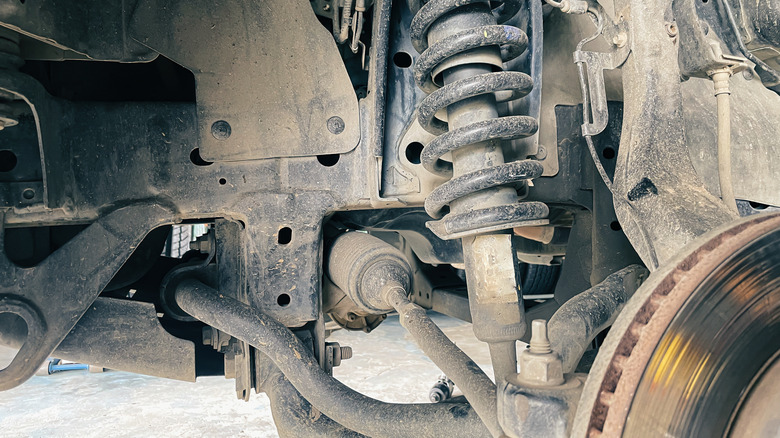Here's Why Your Tires May Feel Wobbly After Getting Them Rotated
If your tires feel wobbly after getting them rotated, it could be caused by several different factors. But the most important thing is to get the cause of your wobble diagnosed and fixed as soon as possible. This will help to make sure that a small tire problem does not become a large safety issue for you and those who ride in your vehicle. This is different from what causes 'death wobble' in Jeeps.
The best course of action, once that you have determined that your tires feel wobbly after you've had them rotated, is to return to the place where those tires were rotated as soon as possible. But during your drive there, it will be very helpful for the tire or repair shop to know more about the specific type of wobbling you are experiencing, so that they can focus on the specific issues that may be causing that wobble and correct it.
To start with, try to figure out whether the wobbling is coming from the front tires, the rear tires, or both. Wobbling front tires can usually be felt through the steering wheel, while rear tire wobbling can cause the entire vehicle to shake. While checking for tire wobble, note the speed range at which it happens, so that the shop can better diagnose the problem that is causing it. Some of the more common reasons why your tires may feel wobbly after getting them rotated may be tires that are out of balance, suspension parts that are worn out, and damage from curbs or potholes.
Why else could your tires may feel wobbly after getting them rotated?
There are other reasons why your tires may feel wobbly after getting them rotated. These can include bent or warped wheels, lug nuts that have come loose, bad wheel bearings, or separation of the steel belts that are inside your tires. Wobbly tires can even be caused by something as simple as low tire pressure, which should not be the case if your tires were just rotated, but hey, it happens. Other wobble-related issues can include loose steering response, a tendency for your vehicle to pull to one side, or problems relating to your brakes when you apply them.
Once that the repair or tire shop has identified the source of your tire wobbling, it can take some concrete steps toward eliminating the problem. The solution taken by the shop will depend on the exact nature of the problem. Out-of-balance tires can usually be fixed with a few strategically-placed wheel weights, unless the tire has worn too unevenly, has external damage, or a belt has separated inside it. For worn-out suspension components, the replacement of the bad parts with new struts, shock absorbers, ball joints, or tie rods should do the trick. Wobbly tires under braking can normally be attributed to warped brake rotors, which can be fixed by machining them or replacing them if necessary. Bad wheel bearings can be replaced if they are causing wobbly tires – here's how to tell if your wheel bearings need replacing (and how much it may cost).
What can happen if you don't fix your wobbly tires?
The consequences of not fixing your wobbly tires range from the merely expensive (having to replace your tires early due to premature uneven wear) to the truly disastrous (having a serious accident that was caused, directly or indirectly, by those wobbly tires). Here are some ways to tell if a car has been in an accident. In between lie other severe consequences that stem from other potential causes of tire wobbling, including un-repaired brakes that could fail, suspension and steering components that could break, bad tires that could blow out, loose lug nuts that could come off and leave you without a wheel while you are driving, and much more.
It's so much easier — and safer — to just have your wobbly tires fixed so you can get on with your life without any further worries. Better safe than sorry is more than just a slogan; it's the best way to be sure that both you and your passengers get back alive from every drive.


